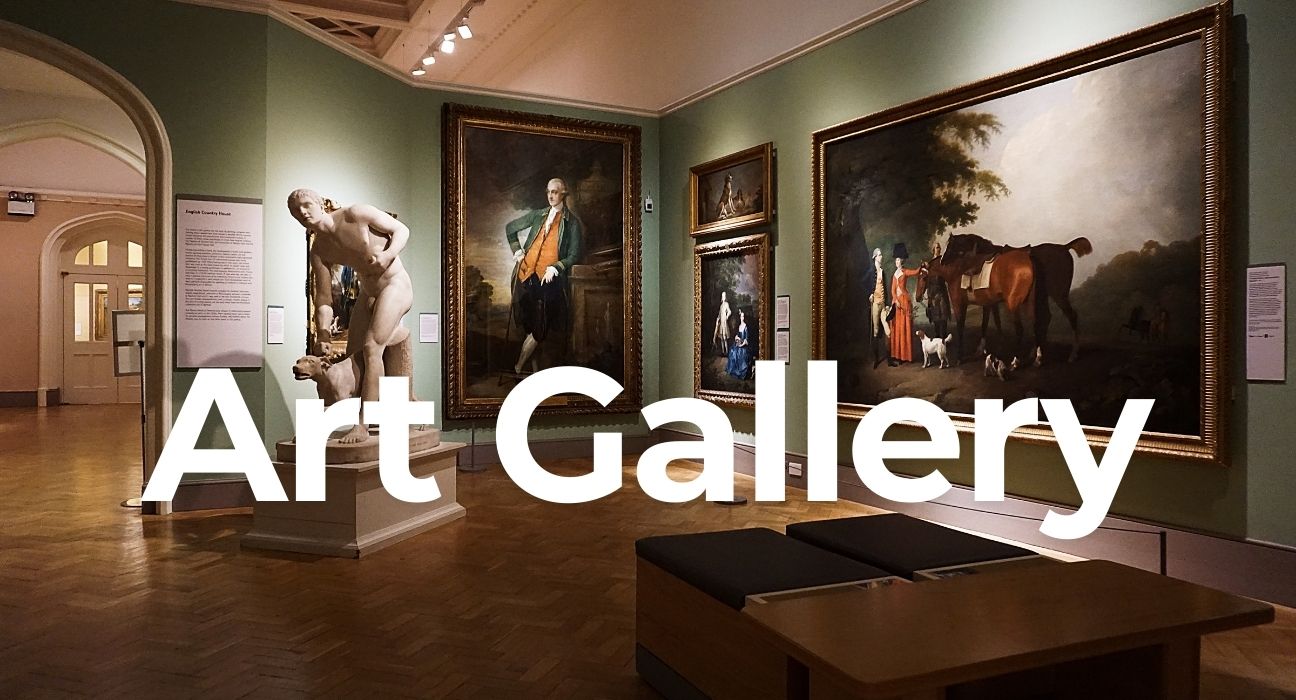Gaining Insight into the Art Market
To thrive in the art gallery business, immerse yourself in the art market’s intricacies. Study prevailing trends, sought-after art styles, and promising artists to pinpoint your audience’s preferences. Participate in art fairs, exhibitions, and auctions to build connections with artists, collectors, and fellow gallery owners. This hands-on experience will equip you with valuable insights into market dynamics and customer behaviour. By understanding these elements, you can strategically position your gallery and curate collections that resonate with potential buyers, enhancing both visibility and sales.
Developing a Business Strategy
Creating a solid business strategy is fundamental to the success of your art gallery. Begin by defining your gallery’s mission and vision. Identify the type of art you will specialise in and the target audience you aim to attract. Next, devise a comprehensive financial plan that includes projected expenses such as rent, utilities, staff salaries, and marketing costs. Consider potential revenue streams, including sales, commissions, and hosting events. Analyse the competition to understand market positioning and identify opportunities for differentiation. Develop a marketing strategy that outlines how you will attract visitors and build a loyal clientele. Additionally, consider legal requirements and obtain necessary permits and insurance to protect your business.
Selecting the Ideal Location
Opt for a venue with high visibility and convenient access to ensure a steady flow of visitors. Assess the suitability of the space for displaying art, including the availability of adequate wall space, proper lighting, and an exhibition-friendly layout. Consider the neighbourhood’s vibe and its potential to attract your target audience. Being located in an artsy district or cultural hub can significantly enhance your gallery’s appeal. Evaluate rental costs in relation to your budget and projected footfall, ensuring you can sustain the space long-term.
Obtaining Financial Resources
Securing financial resources is crucial for starting and maintaining your art gallery. Explore various funding options such as loans from banks, private investors, or venture capitalists. Additionally, consider applying for grants specific to the arts. Many government and private organisations offer funding to support cultural projects. A combination of these resources can provide the necessary financial backing for your gallery.
Crowdfunding platforms also present an opportunity to raise capital while engaging your future audience. Offering rewards such as exclusive previews or limited edition prints can incentivise contributions. Establish a clear and compelling pitch to attract backers. Furthermore, explore partnerships with local businesses or art institutions for additional funding opportunities and community support. Having a diverse mix of financial resources can help mitigate risks and ensure the stability of your gallery.
Curating Your Art Collection
To build a distinguished art collection, focus on selecting pieces that embody your gallery’s mission and appeal to your audience. Regularly attend art shows, open studios, and graduate exhibitions to stay updated on emerging talents. Forge meaningful relationships with both established and up-and-coming artists, ensuring a diverse mix of works. Engage with art collectors to gain insights and potentially acquire notable pieces. Additionally, consider thematic exhibitions that tell a cohesive story, captivating your visitors and encouraging dialogue. An expertly curated collection can not only attract art lovers but also elevate your gallery’s status within the art community.
Arranging the Gallery Space
Designing a visually appealing and functional gallery space is vital for effectively displaying art. Focus on the layout to ensure a logical and engaging flow for visitors. Pay attention to the height and positioning of artworks to create a comfortable viewing experience. High-quality lighting is crucial; use a mix of ambient, accent, and task lighting to highlight different pieces and create the desired atmosphere. Incorporate flexible display solutions, such as movable walls and adjustable lighting, to accommodate various exhibitions. Ensure the space is clean and uncluttered, allowing the artwork to be the focal point. Additionally, include comfortable seating areas where visitors can rest and contemplate the art. Pay attention to accessibility, making sure the gallery is navigable for all visitors, including those with disabilities. Security is also paramount; implement discreet yet effective measures to protect valuable works without detracting from the overall aesthetic. By carefully considering these elements, you can create a welcoming environment that enhances the viewing experience and encourages visitors to spend more time engaging with the art.
Promoting and Advertising
To draw visitors to your art gallery, utilise a blend of traditional and digital marketing techniques. Leverage social media platforms to share engaging content, such as artist interviews, behind-the-scenes glimpses, and upcoming exhibition teasers. Establish a professional website with an online gallery, providing potential customers with easy access to information and artwork. Partner with local media outlets to feature your gallery in articles, interviews, and event listings. Consider collaborating with influencers or bloggers in the art scene to broaden your reach. Distribute printed materials like flyers and posters in high-traffic areas and cultural venues to attract the local community. Hosting events such as artist talks, workshops, and special previews can create buzz and draw in diverse audiences. Implement email marketing campaigns to keep your subscribers informed about new collections and exclusive offers. Engaging consistently with your audience through these various channels can significantly enhance your gallery’s visibility and attract a loyal clientele.
Overseeing Daily Operations
Overseeing daily operations requires meticulous attention to detail. Begin by hiring staff who are not only passionate about art but also adept at delivering exceptional customer service. Establish clear roles and responsibilities to ensure efficient workflow. Utilise inventory management systems to keep accurate records of your collection and streamline sales transactions. Regularly maintain the gallery space, ensuring it remains clean and welcoming for visitors. Schedule routine checks of lighting and display setups to keep exhibitions looking their best. Implement robust security measures to protect valuable artwork, and ensure all staff are trained in emergency procedures. Foster an environment of continuous learning by encouraging staff to stay updated on industry trends and best practices. Lastly, maintain open communication with artists and collectors to nurture these vital relationships, ensuring the smooth running of your gallery and the satisfaction of all stakeholders.








Leave feedback about this